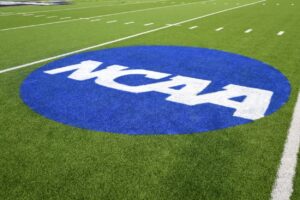
The NCAA’s transfer portal and name, image, and likeness (NIL) deals have brought significant changes to the landscape of college sports.
While these changes have provided student-athletes with more opportunities to exercise their rights and monetize their talents, they have also had a significant impact on traditional college dynasties like Alabama football and Duke basketball.
The NCAA’s transfer portal allows athletes to explore other options and transfer to other schools without having to sit out a year. This has provided athletes with more control over their careers, as they can choose to transfer to schools that offer them better opportunities for growth and development.
However, it has also made it easier for top players to leave traditional powerhouse programs, thus disrupting the continuity of these programs.
Nadarius Fagan is a recent graduate of FAMU who entered the transfer portal in 2018 to leave Syracuse to continue his football career.
“The portal allowed me to thoroughly look into the things I need more as a student-athlete. It allowed me to go on more visits to see what I needed as a player and student that Syracuse didn’t offer,” Fagan said.
Alabama football, for example, has long been a dominant force in college football, having won multiple national championships in the past decade. However, the transfer portal has made it easier for top players to leave the program, as was the case with former Alabama quarterback Jalen Hurts, who transferred to Oklahoma in 2019. While Alabama has been able to rebuild and maintain its success, the transfer portal has made it more challenging for the program to maintain its hold on the top recruits.
Similarly, Duke basketball has long been one of the most successful programs in college basketball, with five national championships to its name. However, the program has seen a number of high-profile players transfer out in recent years, including guard Derryck Thornton, who transferred to USC in 2016, and forward Javin DeLaurier, who transferred to Marquette in 2020. While Duke has been able to reload with top recruits, the transfer portal has made it more challenging for the program to maintain its dominance.
In this year’s men’s March Madness tournament, nearly 70 players were transfers including four on Connecticut’s championship team. Jasen Glanton, a member of the “90.5 playmakers” on Florida A&M’s radio station, says he thinks this will be good for competition.
“I can see this ultimately allowing the smaller schools to compete at a very high clip,” Glanton said.
The NCAA’s NIL deals have also had an impact on traditional college dynasties, as they have given athletes the ability to profit from their name, image and likeness. This has provided athletes with more opportunities to monetize their talents, but it has also created a new dynamic in college sports that could disrupt the traditional power structure.
Alabama football and Duke basketball have long been associated with lucrative endorsement deals and sponsorships, as well as strong alumni networks that provide athletes with opportunities for post-college success. However, the NIL deals have given athletes more agency over their own brands and provided them with the ability to monetize their own image and likeness.
This could potentially disrupt the traditional power structure of college sports, as athletes from smaller programs could now have access to the same opportunities for endorsement deals and sponsorships as those from larger programs. This could create a more level playing field and give rise to new programs and dynasties.
NFL TV analyst Ryan Clark says he thinks NIL deals are just another way of cheating.
“I mean it’s just a legal way of cheating. This is not a new thing, now they can just do it publicly,” Clark said.
However, it is important to note that the NCAA’s NIL deals are still in their early stages, and it remains to be seen how they will impact traditional college dynasties in the long term. While they have the potential to disrupt the traditional power structure of college sports, they could also provide established programs with a new avenue for retaining top recruits and maintaining their hold at the top of the rankings.
It remains to be seen how these recent changes will impact the future of college sports, but it is clear that they will continue to shape the way we think about college athletics for years to come.